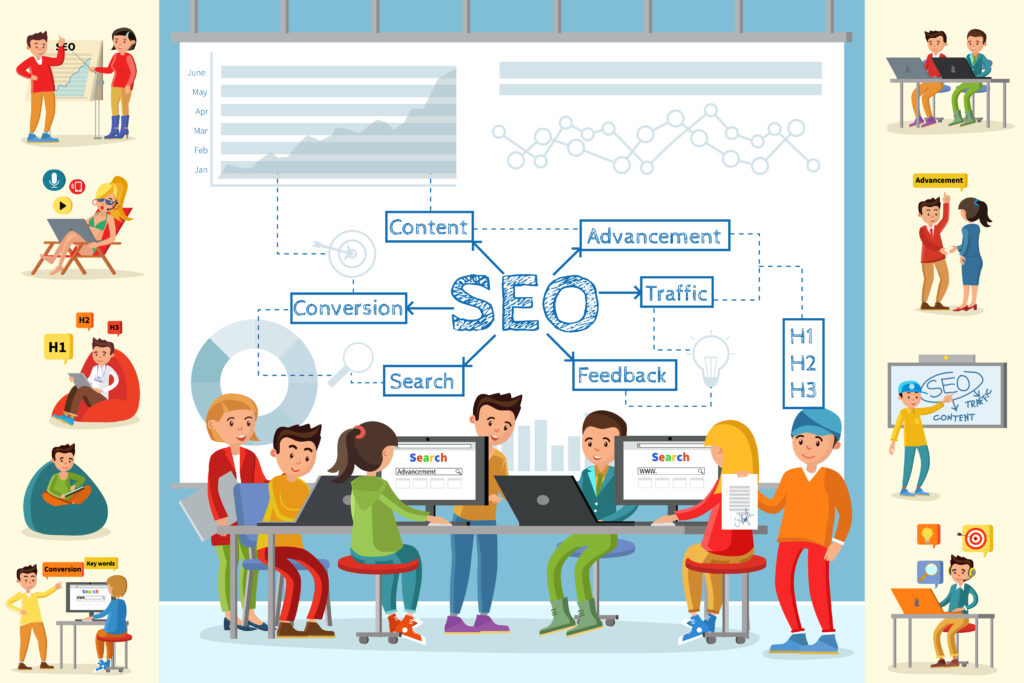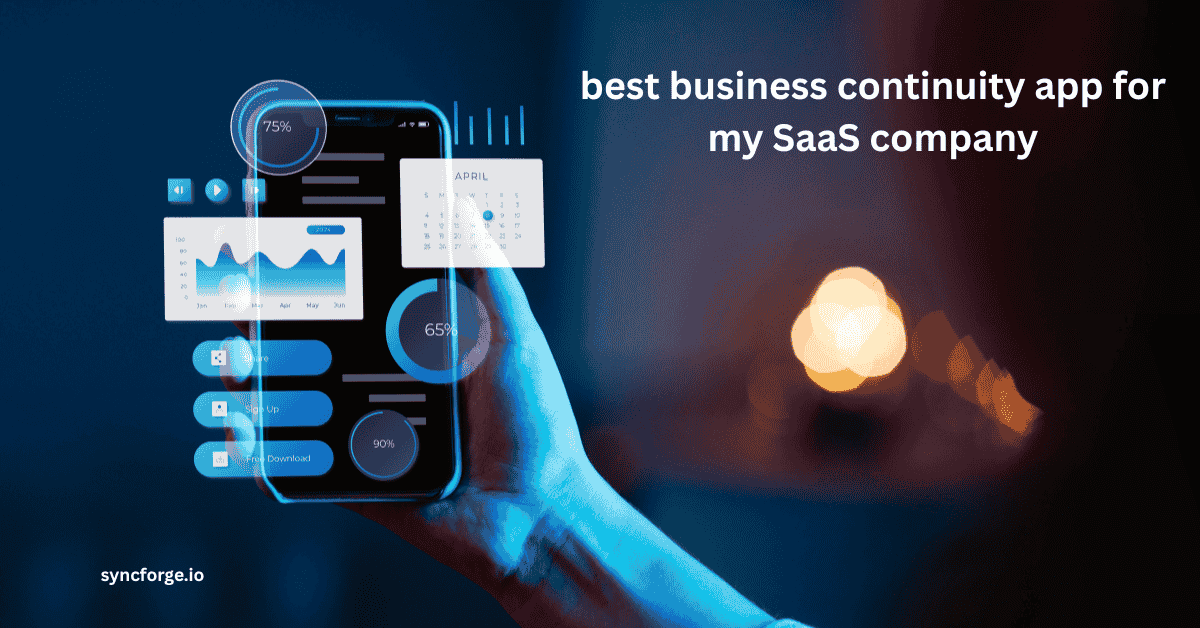SEO Strategies for SaaS Companies That 10x Growth: Real SEO Strategies Driving Organic Growth & Authority

Why SEO Strategies Matter for SaaS Companies?
Are your customers searching for you when they look for solutions? Visibility is not optional in a crowded SaaS market. It is a growth lever that distinguishes the top players from the others. SEO Strategies for SaaS Companies offer a repeatable playbook to attract demos, trials, and long-term revenue.
This manual explains the effective methods with examples from the real world and the steps that you can take. Ready to start? Begin with a baseline SEO audit and map a 90-day growth plan.
Building a Strong SaaS SEO Strategy: Aligning Product and Marketing
First, have a strong SaaS SEO plan to support your work. A real plan starts with understanding who your customers are and what questions they have. Determine buyer journeys according to their search intent. Connect content with product signals and pricing pages.
Get marketing and product teams working together so that the message remains consistent via pages, blogs, and in-app surfaces. A well-organized keyword research approach for SaaS unveils possibilities in onboarding, pricing, and ROI. These are the main aspects of SEO Strategies for SaaS Companies.
Content Marketing for SaaS SEO Success
Content is the engine. SaaS content marketing should answer real questions from trial users and power users. Develop topic clusters for onboarding, pricing, security, and ROI that feature the main themes of each tutorial, the use of the product, and case studies linked to the pillar pages.
A strong content strategy supports long-tail SEO for SaaS startups and scales to enterprise needs. Good content earns links, drives demos, and improves conversion. SaaS marketing SEO tips stress that the content should be of high quality, relevant to the user’s needs, and have the user’s intent as the main focus.
On-Page and Technical SEO for SaaS Companies
Technical perfection must be there at all times without any compromise. SaaS on-page SEO ensures that pages are quick, the code is clean, navigation is user-friendly, and there is structured data. The architecture of the website should be not only optimized but also scalable for when new features and pricing tiers are added.
Mobile and desktop product pages must load quickly. To get rich results, a schema should be implemented for FAQs, pricing, and features.
Link Building Strategies for SaaS Companies
Links Building still matter in SEO. Develop data-driven posts, benchmarks, and industry reports that others will find valuable and want to reference.
Conduct targeted outreach to industry blogs, analyst sites, and partner pages. Utilize internal linking in conjunction with external links to direct authority from linked pages to high-value pages, such as pricing, demos, and onboarding guides. This is where most of the robust inbound marketing for SaaS is focused.
Real-World Example: How SEO Drove SaaS Growth
Just one real-world example would be enough to see these ideas work in practice. A mid-sized analytics SaaS company radically changed its SEO strategy by focusing on a content hub that was centred around onboarding and ROI.
They did targeted keyword research for SaaS topics such as “time-to-value,” “activation metrics,” and “ROI of analytics.”
In less than a year:
- Organic traffic was up by 180%,
- Trials saw a 30% increase, and
- ARR was significantly lifted.
The lesson: combine SaaS content marketing with precise on-page optimization and credible, data-backed assets. This illustrates how SEO Strategies for SaaS Companies translate into measurable growth.
Measuring SEO Performance and ROI
Measurement matters. Track organic traffic, ranking movement, and qualified demo requests. Tie SEO outcomes to product metrics like activation rate and churn reduction. Use dashboards that show time-to-value from search to signup, CAC payback from organic channels, and retention influenced by feature-focused content.
A strong SaaS SEO strategy includes regular audits of crawl budgets, indexation, and page experiences. It also requires ongoing optimization of anchor content and conversion paths to maximize ROI.
Implementing SEO Strategies for SaaS Companies: A Step-by-Step Plan

- Carry out keyword research for SaaS and map the user’s intent throughout the funnel. Concentrate on core topics like onboarding, pricing, security, and ROI.
- Create a content strategy that is in line with the product goals. Compose a hub with tutorials, case studies, and benchmarks. Link from blogs to product pages to distribute authority.
- Strengthen on-page SEO for high-intent pages. Optimize titles, headers, meta descriptions, and internal links for pricing, features, and onboarding.
- Invest in SaaS link building. Authority signals in the form of earned links from industry publications are a great way to improve rankings and to increase trust for terms that are used competitively.
- Technical health must be kept at a higher level all the time. Various factors, such as site speed, mobile experience, structured data, and crawl accessibility, should be audited regularly.
- Alignment with inbound marketing for SaaS is crucial. The topics can be referred to as the bait to get, train, and persuade prospects to purchase, after which product-led activities can be used as a means of their nurture.
- The growth plan is to be utilized for the quarterly state-of-the-art sessions, evaluating the influence, and subsequently making the alterations depending on the collected data..
Sustainable SEO Growth for SaaS Businesses
Being a sustainable one, a method appropriately integrates technical SEO, content marketing, and product signals. In essence, it is a continuous optimization of your SaaS inbound marketing endeavours that is necessary.
Your team should be willing to test out long-form guides, ROI calculators, and how-to videos that are aimed at answering buyer queries. As a matter of course, update content so that it reflects product and pricing changes.
Whether it is a reliable SaaS SEO agency or an in-house team with solid processes, they can keep up the pace and bring in consistent, scalable results.
Best Practices For Governance and Excellence
- Create a clear ownership model. Define roles for SEO, content, and product teams.
- Use data-driven decision-making. Favour experiments with defined hypotheses and dashboards.
- Maintain transparency with stakeholders. Make it a point to communicate the progress regularly, along with the ROI analysis.
- Put money into training. Always keep the teams informed about the constantly changing SEO techniques and the changes in the algorithm.
- Prioritize user experience. Search success should not come at the cost of user satisfaction or conversion quality.
Conclusion
SEO strategies for SaaS companies can drive a company’s expansion strongly when the three factors: strategy, content, and technical SEO, are in agreement with product objectives. It is recommended that the work be initiated with deeply focused keyword research for SaaS, the most important on-page issues be attended to, and an ROI-focused content program be started.
Not having to wait for perfect data, one may start with a 90-day plan and make adjustments as necessary.
Do you want to use search as a channel to achieve your business growth? Then, getting started with your implementation by booking a strategy session with an expert team is the right move.
FAQs
Q1: What is the most essential element of SEO Strategies for SaaS Companies?
The most essential element of the SEO strategies is having a clearly defined SaaS SEO strategy that demonstrates alignment with product goals and buyer intent.
Q2: How much time is needed for SEO of SaaS to show results?
The time span is usually between 3 and 6 months to see significant changes in traffic and demos, with steady progress over 12 months.
Q3: What should I focus on Inbound marketing for SaaS or paid search?
The focus should be on both. SEO and inbound marketing for SaaS are great sources of low-cost demand, while paid channels can create the momentum needed in the early stages.
Q4: What are the most important metrics?
The most relevant metrics are organic traffic, demo requests, trial conversions, as well as contribution to ARR and LTV.
Q5: How can I handle pricing and ROI in SEO for SaaS?
Linking content and product pages to pricing with the help of clear CTAs is one way. Another way is to measure ROI through demo requests, conversions, and revenue growth coming from organic channels.
Q6: Should I hire a dedicated SEO expert or agency?
The answer is yes. A specialist can do it faster, easier, and more efficiently to meet best practices across content, technical SEO, and link-building while scaling.
Q7: How frequently should I change my SEO strategy?
It is best to have quarterly reviews. Update based on algorithm changes, product updates, and market shifts.




